“If you build it, they will come.” Yes, it’s a line out of a Hollywood movie. It worked for Kevin Costner’s baseball field in the 1989 film “Field of Dreams,” but will it work for a dairy? If a producer builds a visitor center on the dairy and invites tourists to learn more about the industry, will people come?
Visitor centers are popping up on both large and small dairies around the country with one goal in common: Educate the consumers. With 1 percent of the population feeding the other 99 percent, dairy owners say the investment in agritourism is worth the money and time.
“We built it,” says Fair Oaks Farm CEO, Gary Corbett. “It’s not Iowa, and it ain’t heaven, but the people still came.”
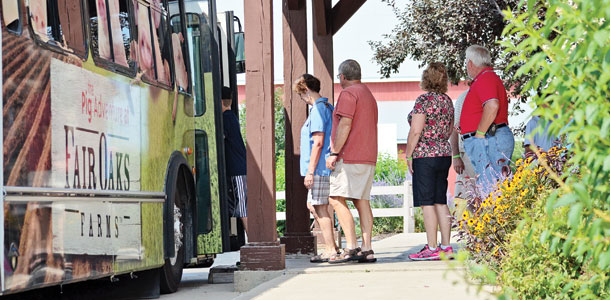
Corbett says Indiana-based Fair Oaks opened its doors to the public 10 years ago after noticing the trend of anti-ag activists having more of an impact on the food industry.
“We had to understand them better,” Corbett says. “What we came away with was that they are articulate and committed and well-funded, and we’re not going to change them.”
To counteract the anti-ag message, Fair Oaks went on the offensive. They weren’t going to win a battle on YouTube, Corbett says, so they opened the farm gates and let consumers in.
“We viewed it as an opportunity to go more on the offensive and be proactive,” Corbett says. “We’re proud of what we do, and opening it to the public was worth the step off the tall pier.”
Jim Ahlem, one of the co-founders of Hilmar Cheese in California, says he and his partners had a similar experience. None of them had any experience in the tourist industry but knew it was important to get a positive message out to consumers.
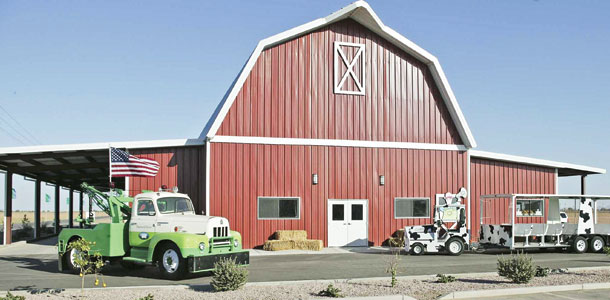
“We have a lot of pride in it, for us and in our community; we think we have an obligation to educate about what was going on,” Ahlem says.
Hilmar started with a small retail shop in their front office back in 1996-1997. It didn’t take too long for the demand for tours, including views of the cheese-making facility, to outgrow the space.
Now, Hilmar’s visitor center is a 20,000-square-foot building and a park featuring a retail store, café and gift shop. The center also provides hands-on interactive exhibits on cows, dairies and cheese-making.
At the Arizona-based Shamrock Farms, tours of the dairy have been frequent throughout the 90-year history of the company, says Shamrock Farms Vice President of Marketing Sandy Kelly.
In 2005, they opened the barn doors formally with “Farm Tour.”
“Our tour gives Arizonans and visitors the opportunity to learn about agriculture and understand how milk gets from our farm to their family’s table,” Kelly says.
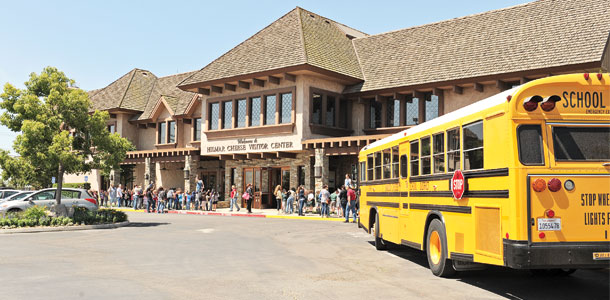
According to the USDA, in a 2007 U.S. Census of Agriculture, 23,350 farms indicated they provided agritourism and recreation services “valued at $566 million.”
Of those farms, nearly 4,000 indicated gross farm receipts of $25,000 or more.
That same USDA report says many producers involved in agritourism report seeing a benefit to having non-competing agritourism enterprises in the area to increase traffic and provide more tourist attraction to customers.
Those enterprises can include everything from multi-million dollar tourist centers to hosting small events and weddings on farmground.
“It’s not a profit center for us by any stretch of the imagination,” says Hilmar’s Ahlem. “It does cost us money, but we’re all very comfortable with it.”
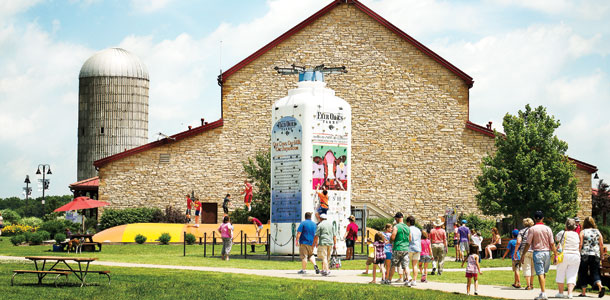
At Fair Oaks, Corbett says he was able to capture checkoff funds to help offset the costs. That money covers about 50 percent of the operating costs, and the gate covers the bulk of the other half. An adult ticket to the farm is $25. Fair Oaks has a 501c tax status as a non-profit.
While his company has chosen to go “all in” with what he calls a “Disney-esque” experience, he says that level of commitment is not necessary.
“The driver is education. Understanding the dynamic of consumers, what they’re looking to understand,” Corbett says. “It’s been a very pleasant learning experience for us. All these folks come with no agenda. They’re coming to understand and learn. It’s been fun to engage these folks; it’s a family-oriented experience and allows them to experience where their food comes from.”
Fair Oaks not only includes a dairy experience, but they also have a pork information center. They’re adding crop centers as well and poultry and beef complexes over the next few years.
Shamrock’s Sandy Kelly says the visitor center is an extension of advertising and marketing efforts.
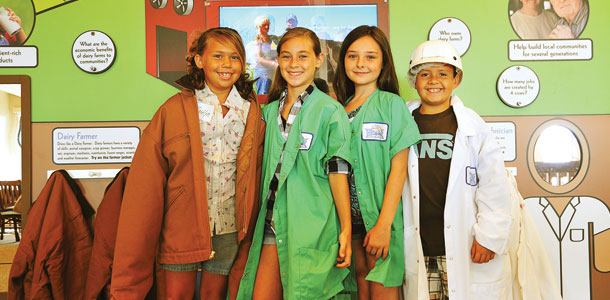
“It’s one of the many ways we give back to the community through education, and it simultaneously serves as a marketing initiative to promote the high-quality dairy products Shamrock Farms has been providing for more than 90 years,” Kelly says. She says the tours are both entertainment and education for Shamrock’s customers.
Corbett emphasizes that consumer education needs to take place and shouldn’t been seen as something only the big farms engage in. The world no longer stops at the farm gate, he says.
“It doesn’t have to be at our magnitude. We encourage and support this idea of engaging one-on-one.”
“The more of us, the better,” Ahlem says.
Both men say it’s essential in today’s market to show consumers the products are made in an environmentally sustainable way. Both companies have made a commitment to conservation and recycling.
Fair Oaks uses “poo power” to provide electricity to its barns and plants. The farm has anaerobic digesters to recycle waste and reduce the need for natural gas or electric power.
At Hilmar, the company’s headquarters and innovation center have been recognized by the U.S. Green Building Council for “green” design and construction.
As for biosecurity, there is no direct contact between farm visitors and the animals. Fair Oaks offers bus tours through hog and dairy barns, but employees who work with animals do not come into contact with general visitors.
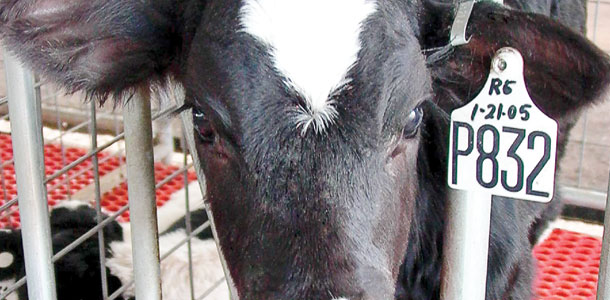
“When we first envisioned this, we’d hoped to be more interactive,” Corbett says. “With hoof-and-mouth, it just wasn’t feasible. We create the environment; there’s no direct contact with any of the animals.”
The dairies that supply Hilmar with milk for its cheese are several miles away from the plant. Visitors are not allowed inside the cheese plant itself but can watch the cheese-making process from viewing windows.
“I can’t even get into the plant anymore,” he says.
Ahlem says they do occasionally give tours on his dairy, but it’s done after cheese-plant tours.
He also says the visitor center has an added business benefit for Hilmar’s customers. The company’s cheese is sold wholesale, so they don’t market a retail product. The companies that buy the cheese will send representatives to the visitor center for a tour.
“It’s a draw for our customers; it’s really a plus.” PD
PHOTOS
PHOTO ONE: Fair Oaks Farm pig bus.
PHOTO TWO : Shamrock Farm welcome barn.
PHOTO THREE : Hilmar Cheese visitor center.
PHOTO FOUR : Fair Oaks visitor center.
PHOTO FIVE : Students enjoying the Hilmar Cheese exhibit.
PHOTO SIX : A calf at Shamrock farms. Photos courtesy of LAR Photography, Hilmar Cheese and Shamrock Farms.

Karma Metzler Fitzgerald
Dairy Producer
Shoshone, Idaho
See it for yourself:
Fair Oaks Farm
856 N 600 E
Fair Oaks, Indiana
Featuring tours of dairy and hog facilities along with gardens, café and Mooville, an interactive playground.
Shamrock Farms
2228 N. Black Canyon Hwy.
Phoenix, Arizona
Tours, only available in fall and winter months, provide farm tours in an open-air tram. The service features barn tours along with dairy museum and gift shop.
Hilmar Cheese
9001 N. Lander Avenue
Hilmar, California
Tours include a look at the cheese-making process through guided tours or “Cheese-making University” for school-aged children. There is also a café, coffee shop and park area. Interactive exhibits teach cheese and dairy history and information.




